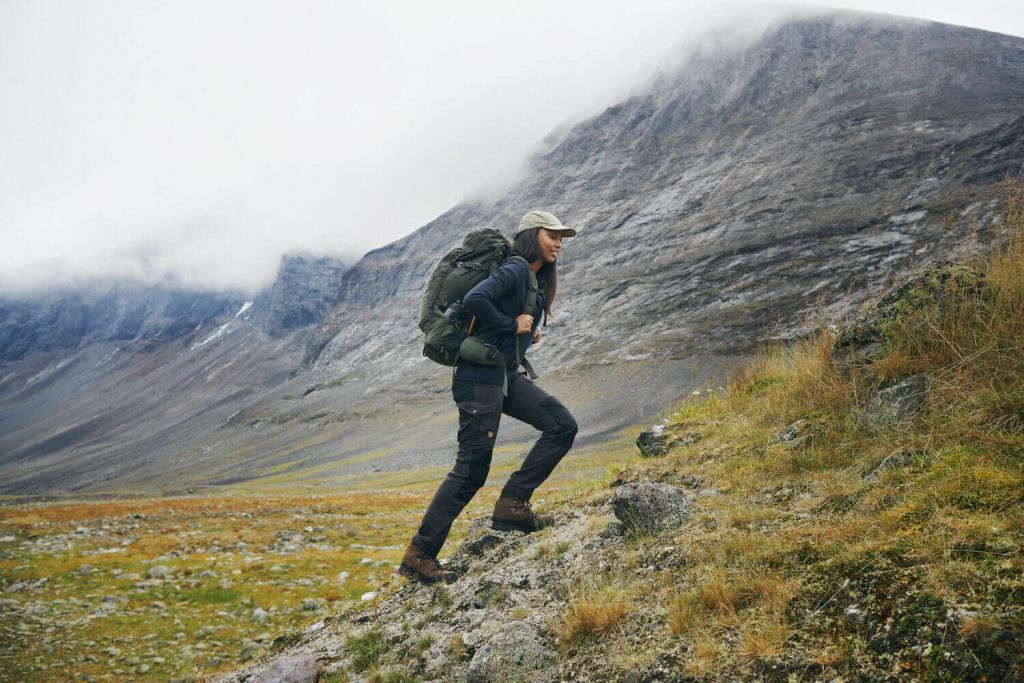What sustainability means to us
Sustainability is something we are naturally invested in at Fjällräven. It’s complex but achieved by balancing the now with the future.
When nature is your reason for being and the impetus behind starting your business in the first place, it’s vital that you do not jeopardise its existence.
Today, Fjällräven is a global brand, but we are the result of one person’s dream: Åke Nordin’s. He wanted to share his passion for nature with the world and did so in 1960 with the lightweight and strong aluminium-framed Backpack Lätt. Since then, sustainability has been a guiding principle and it has a major impact on our products.

The business of longevity.
First and foremost, we are passionate about longevity. No matter the product, if it is durable, functional, and timeless enough to last you decades (or, better yet, generations) the lifetime impact it has on the environment is lower than buying something new.
On the other hand, no matter how long your gear lasts, we must manage the reality that we produce products. There are timeless classics, and new favourites, and like Backpack Lätt before them, they are all beloved. And in demand.
Let’s be honest. If we want to have zero impact, we would just close. But we believe that the environmental impact we have can be balanced by the positives of getting people outdoors and raising awareness around issues related to caring for nature.
Christiane Dolva Törnberg, Fjällräven Global Sustainability Consultant
As the Fjällräven brand grows, we are faced with a paradoxical question: How does a company that wants to preserve nature continue to produce goods that impact nature?
One solution: sustainable development.
Balancing today and tomorrow.
The UN defines sustainable development as “development that meets the needs of the present without compromising the ability of future generations to meet their own needs”. Though the term is bandied about a lot, we are pursuing it with the final goal of achieving a completely circular system of production and consumption.
In other words, we want to be a zero-waste business, and working to this we continuously evaluate environmental impact when we create products. We measure the emissions, chemicals, raw materials, and energy that go into each item, and think about their impact on nature during use.
To see the mindset at work, look no further than our ongoing quest to go PFC-free. In 2015, we decided to remove PFC impregnation from the entire Fjällräven product range and achieved our first milestone with the Keb Eco-Shell Jacket. Today, all our new shell garments, like the High Coast Hydratic Trail Jacket and Vardag Hydratic Anorak, are impregnated with PFC-free water repellents.

You can also see the results in the latest fleece tops, Abisko Lite Fleece Jacket and Abisko Lite Half Zip. Both are made of 100% recycled material and dyed with a process that uses recovered CO2 in a closed-loop system which requires no water and produces no wastewater.
We believe that the environmental impact we have can be balanced by the positives of getting people outdoors and raising awareness around issues related to caring for nature.
Christiane Dolva Törnberg, Fjällräven Global Sustainability Consultant
Natural or synthetic?
Natural materials are always better than synthetic, right?
The short answer: It depends.
The longer answer is that we must navigate a complex world to ensure the materials we use support sustainable development. Synthetics like fleece, nylon and polyester for example, are great for outdoor clothing, because they are light, quick-drying, comfortable and easy to take care of. They are, however, made from oil. To mitigate their impact, we now use recycled synthetics. G-1000, which is made of 65% polyester and 35% cotton, is made of recycled polyester (except for the stretch materials) and organic cotton.

The next challenge is reconciling the demand for recycled materials with the need for the raw materials they’re made of. To mitigate this, we continue to diversify our sources and innovate. The Fjällräven Down Promise has ensured all our down is fully traceable since 2014, and our wool comes from farms that ensure animal welfare, environmental and economic sustainability.
Minimal footprint for maximum impact.
In the end, sustainable development is all about achieving balance. The fine line between the here and now and the future. While we produce gear that makes your next trek more comfortable, rest assured we are doing all we can to ensure future generations can experience the same. Sustainability is a balance.
